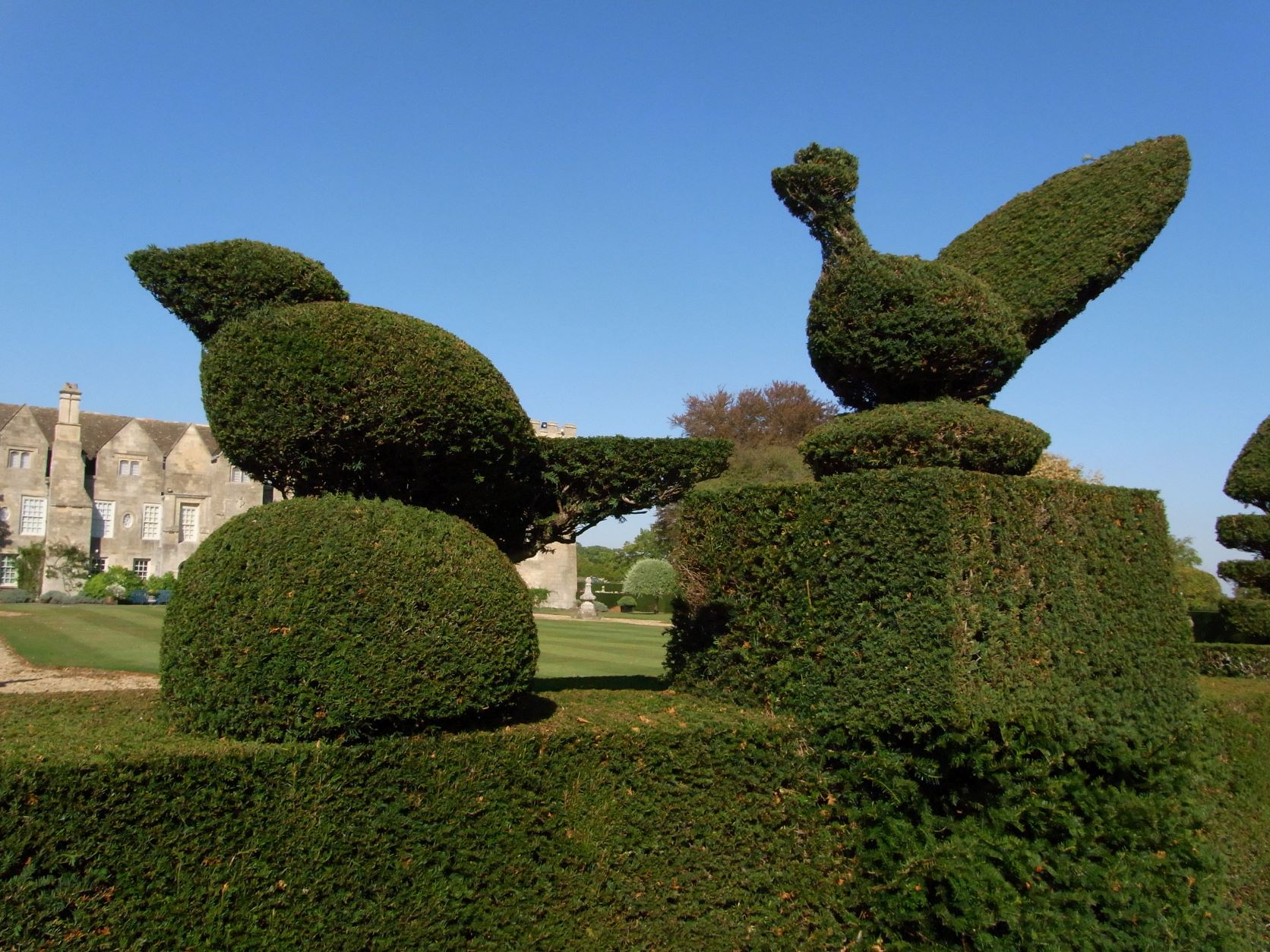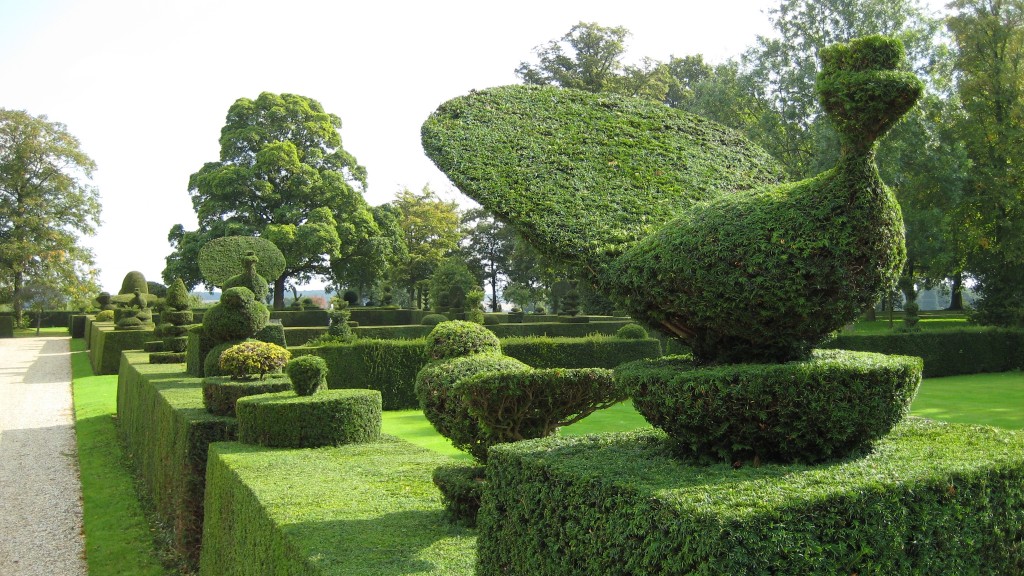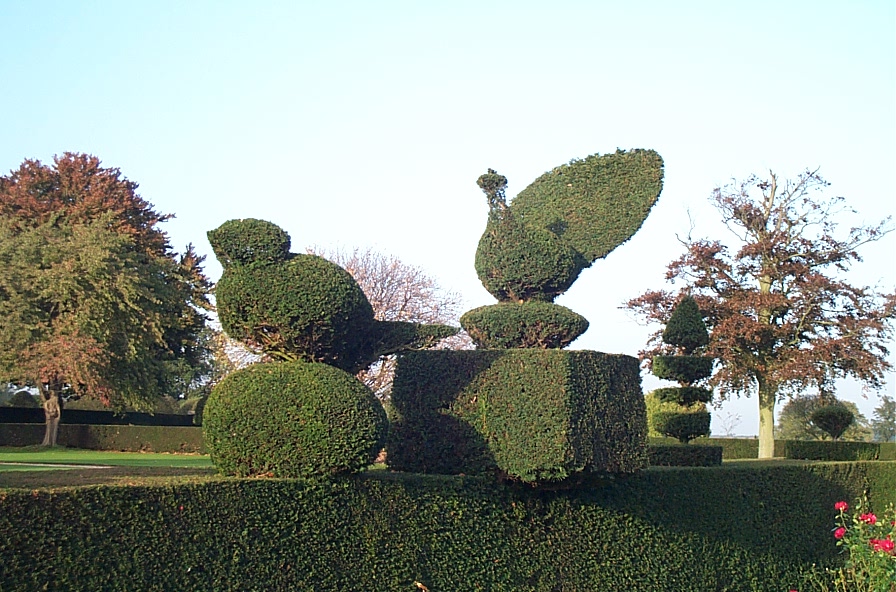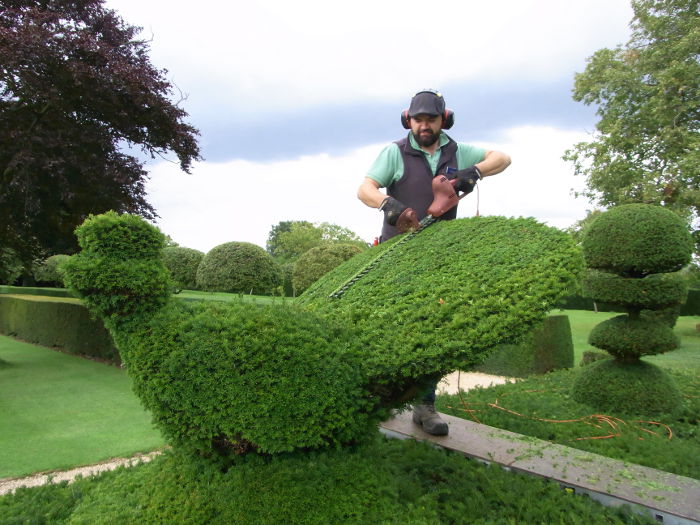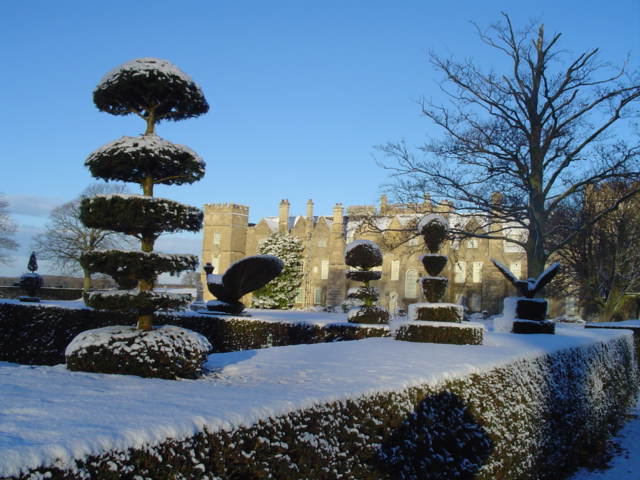AN INTRODUCTION TO TOPIARY
What is topiary? Most would consider topiary as the art of clipping trees and shrubs into elaborate shapes and patterns, and they would be right. However, even shaping a hedge into a non-descript neat box or rounded shape can be considered topiary. Beyond this, the term may also be used more loosely to describe a number of garden features that rely on the close clipping and shaping of plants, such as parterres, mazes and labyrinths, and knot gardens. In short, topiary is ‘a form of decorative folk art’.[1]
[1] Dr D.G. Hessayon, The Bedside Book of the Garden (London: Expert Books, 2008), p. 316.




